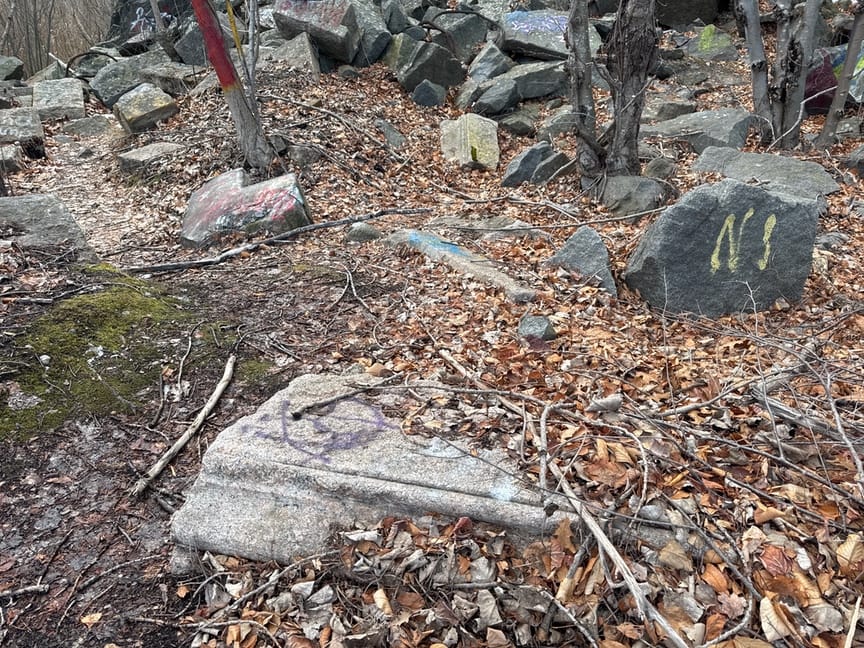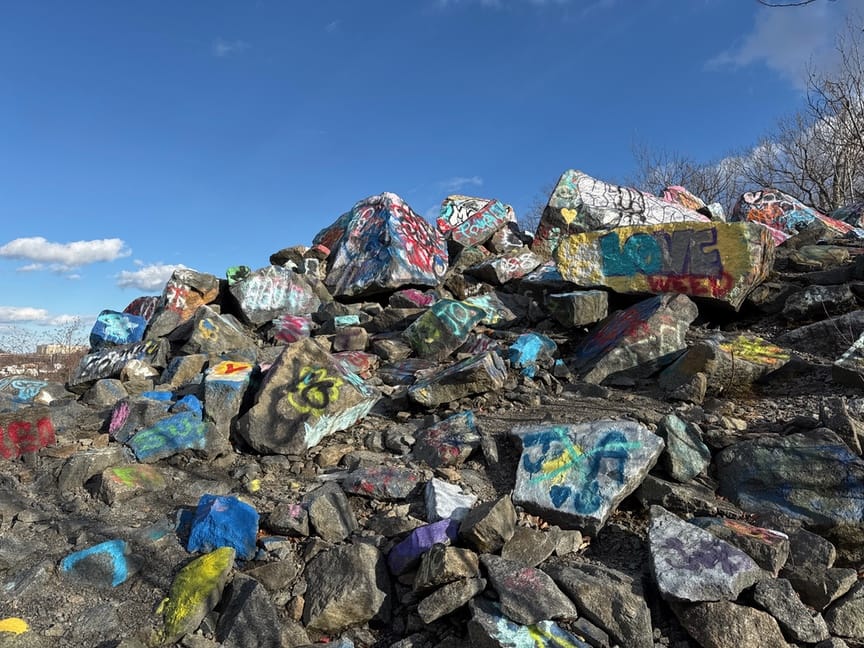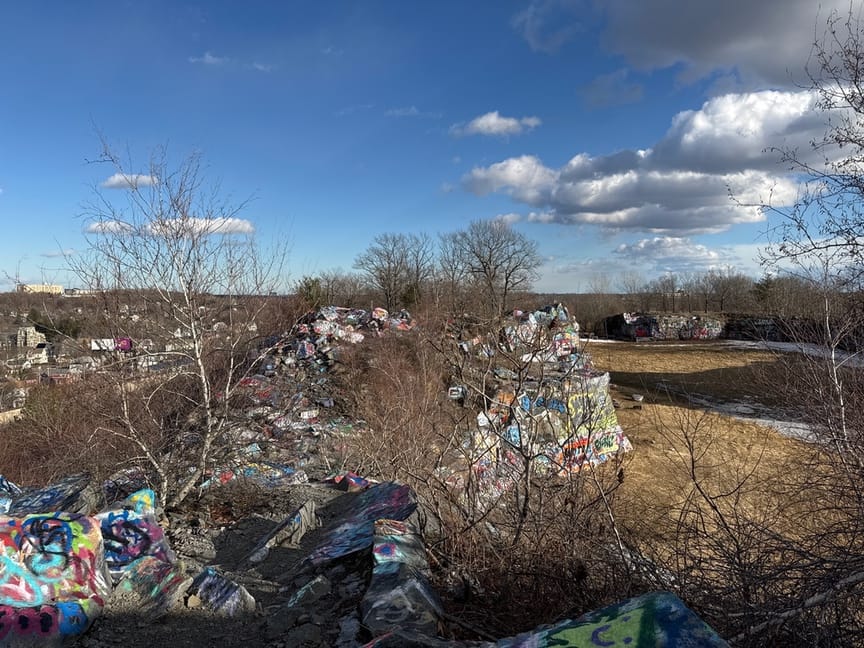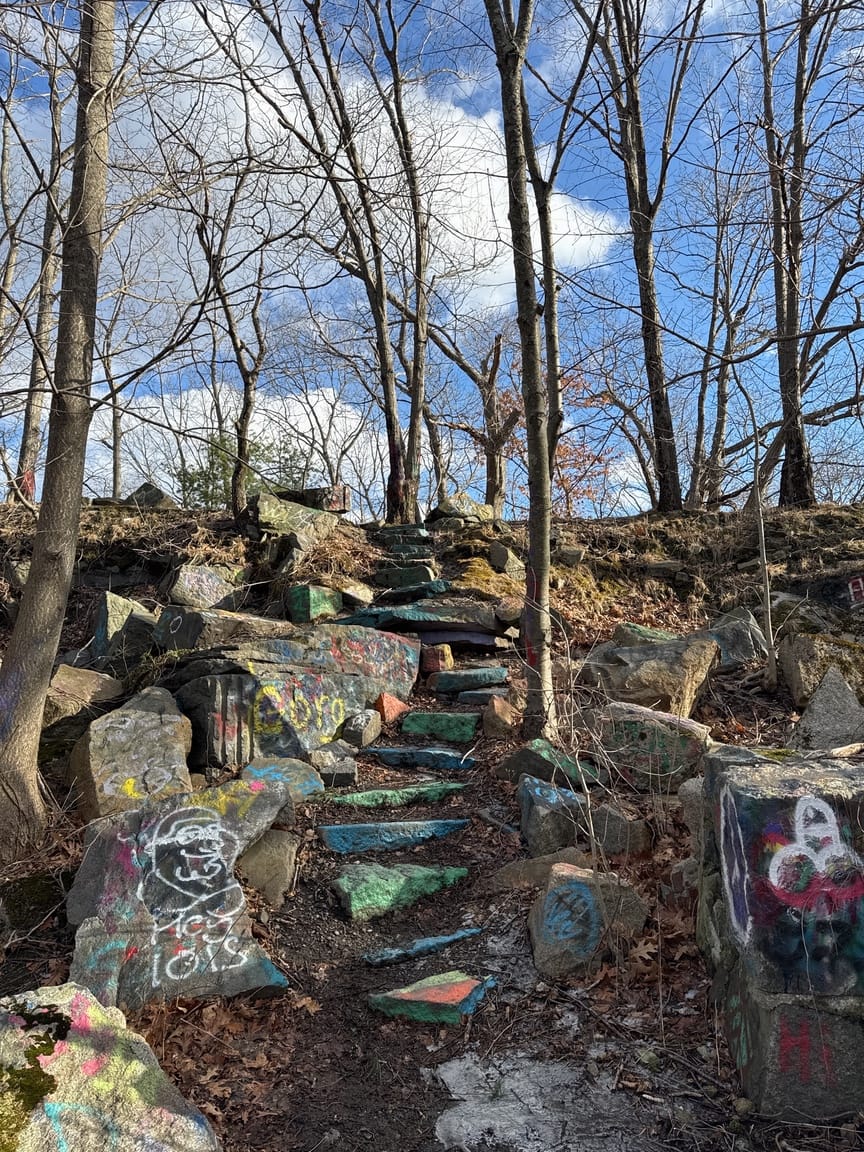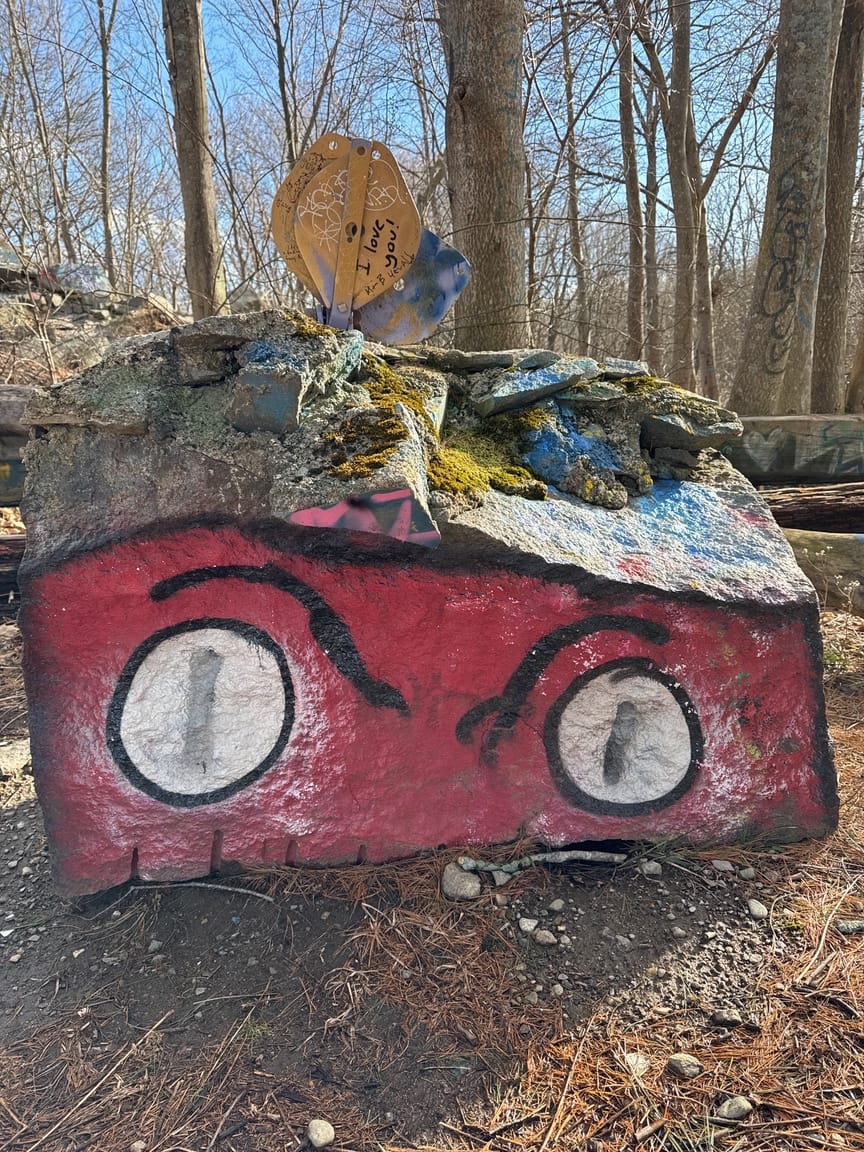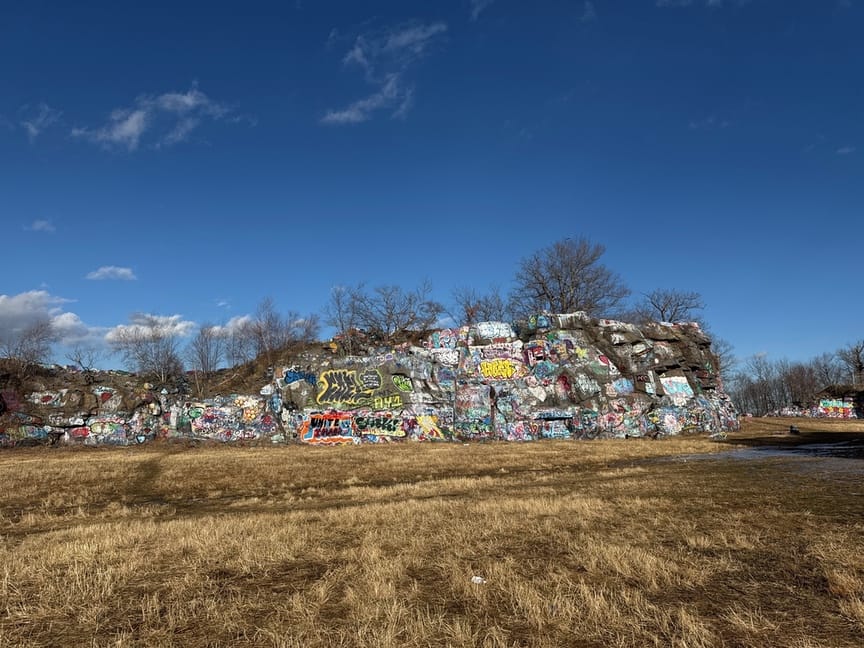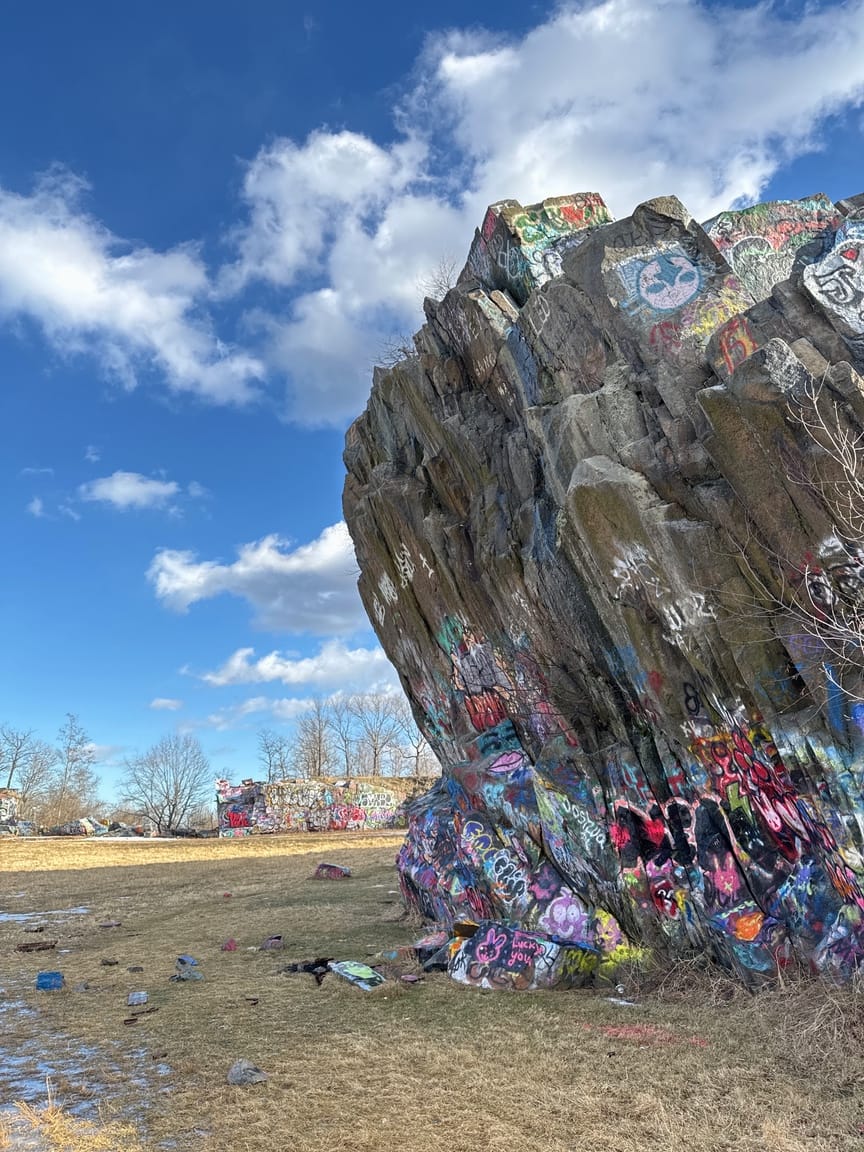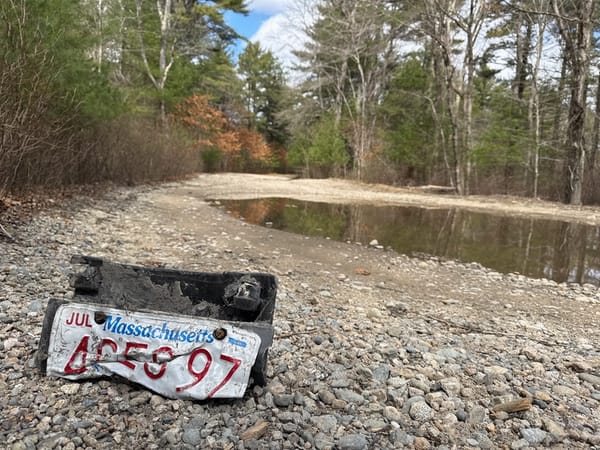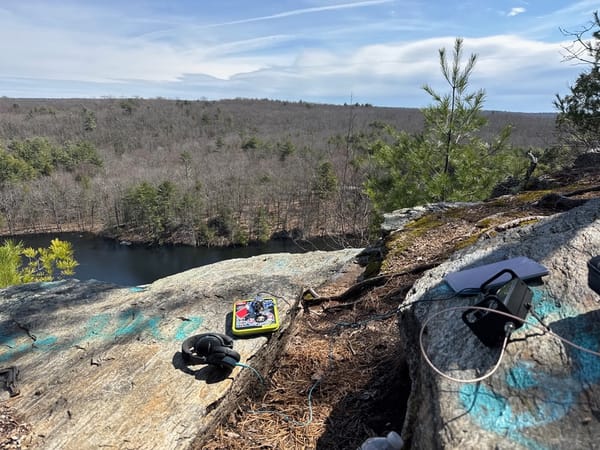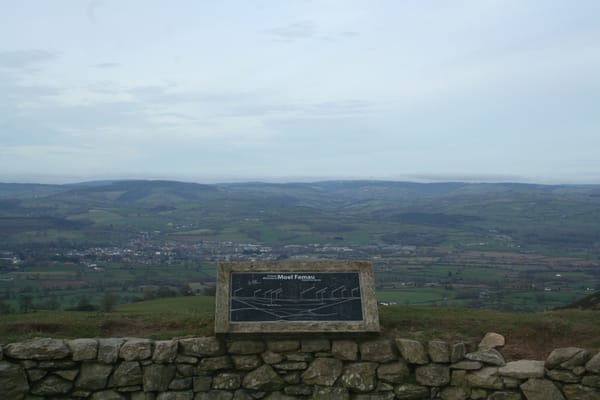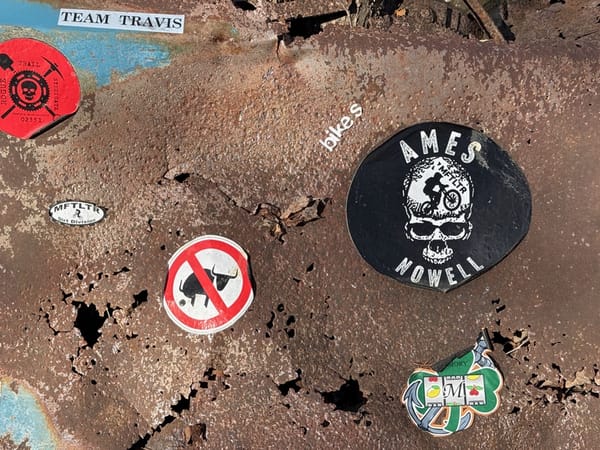US-8424 Quincy Quarries SR
I was completely unprepared for what was around the corner.
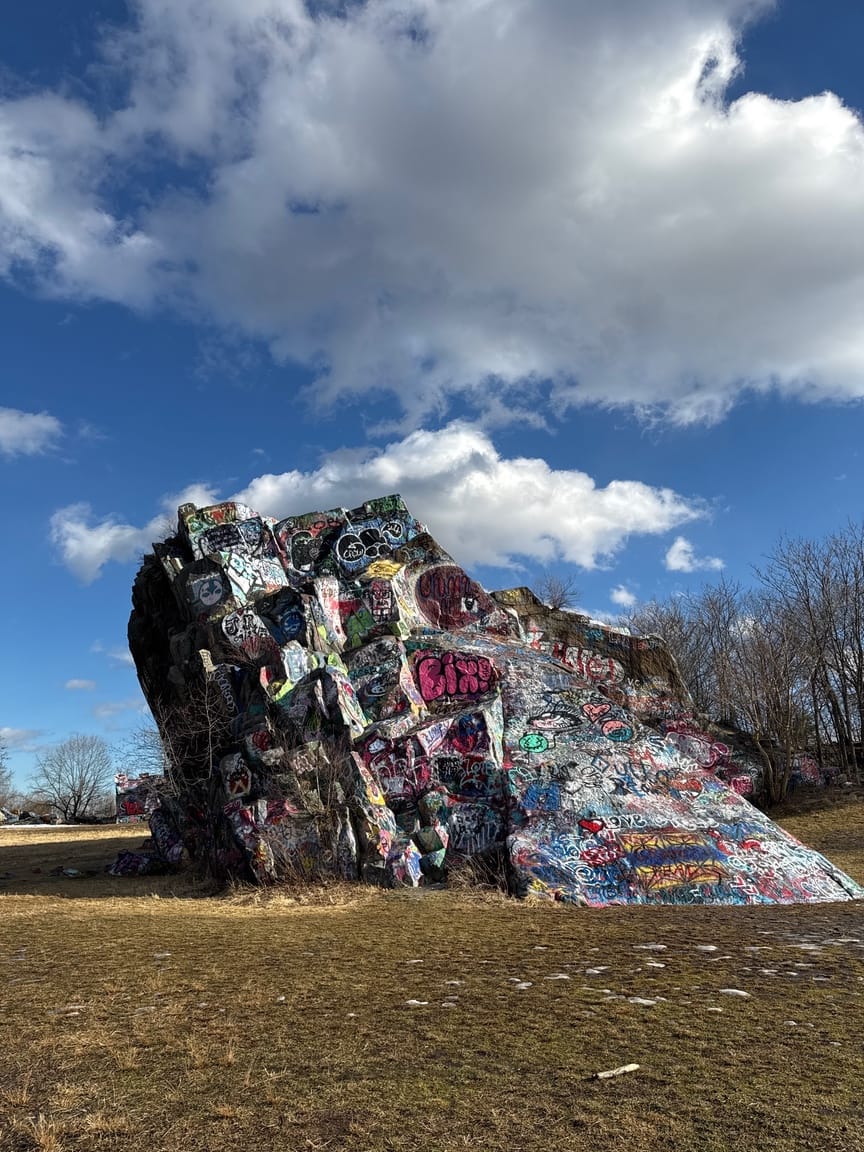
I've seen a lot of interesting things over the course of hundreds of hikes in the northeastern woods, and I've been to a fair number of New England quarries and know what they generally look like. What I saw at Quincy Quarries, south of Boston, was not like any of them.
Quarry work began here in earnest in the mid-1800s and it remained an active site until the 1960s. Stone cut here was used for Boston's Bunker Hill Monument, the base of the Statue of Liberty, and countless building projects in Boston and surrounding towns. After the quarry was shut down in the 60s it became a popular spot for kids to hang out and, for some, to dive from the rock outcrops into the water, which in spots reached depths of over 200 feet.
After dozens of people died jumping off of the rocks, the state decided to drain the quarry and fill it in with dirt and construction material hauled in from The Big Dig, a project in the late 1990s to put Boston's main highway underground. The idea was to create a park with open space and a few easy paths in an area adjacent to the Blue Hills State Reservation, with interesting rock formations for people to visit and enjoy.
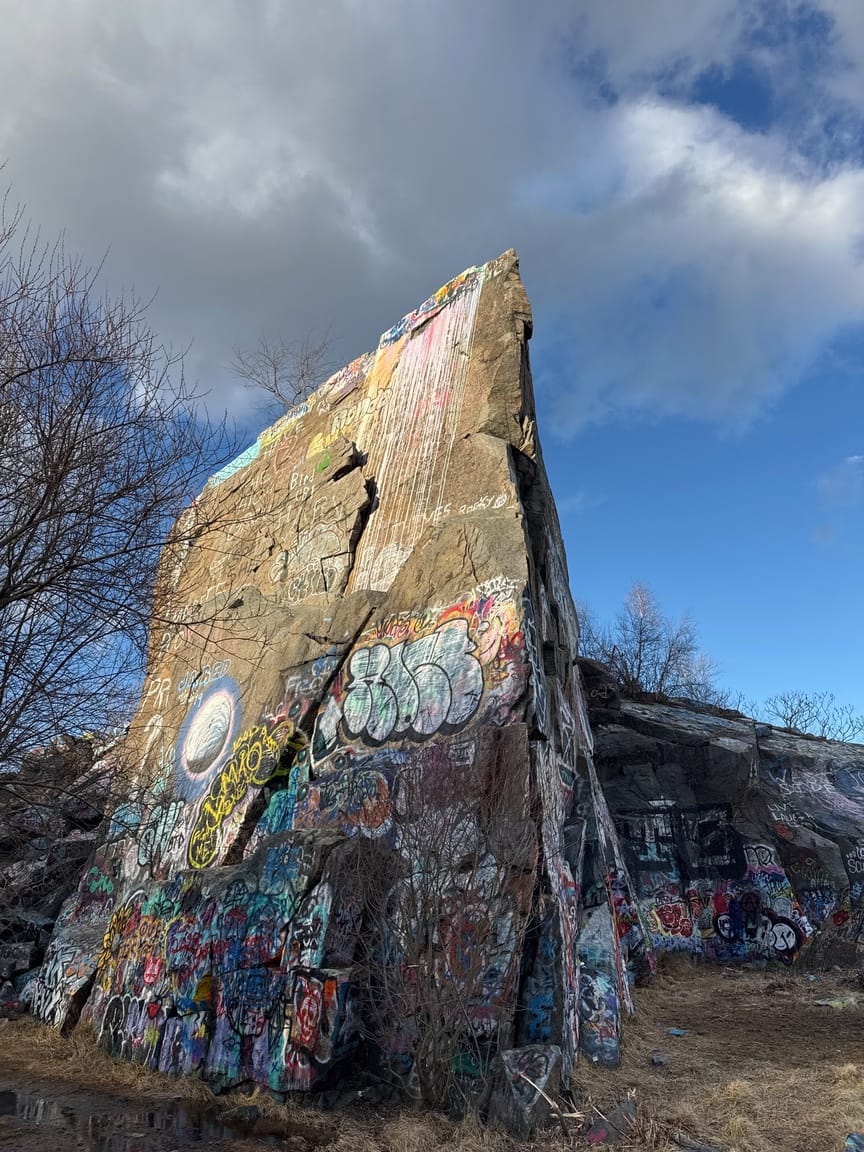
What happened next was that groups of rock climbers from the Boston area began to use the newly formed park as a training ground. There are a large variety of climbing challenges presented here, from the simple to the highly technical, but they tend to be small, as the outcroppings now stand only 50-60 feet high. It's an astoundingly popular destination for climbers, and many area clubs hold sessions here in warmer weather. Quite a few sheer faces have bolts installed, and there are bolts or existing staples at the tops for over-ropes.
Then what happened was that someone painted a little graffiti on a rock face. And then someone else. At some point a decision was made to not clean the graffiti off of the rocks, and the park became an amazing open-air art exhibition and, since it's been going on for so long now, a museum of sorts.
Every available surface has been painted, or will be painted soon. Coming out of the parking lot there's a little curve, and when you make that turn it all just hits you in the face.
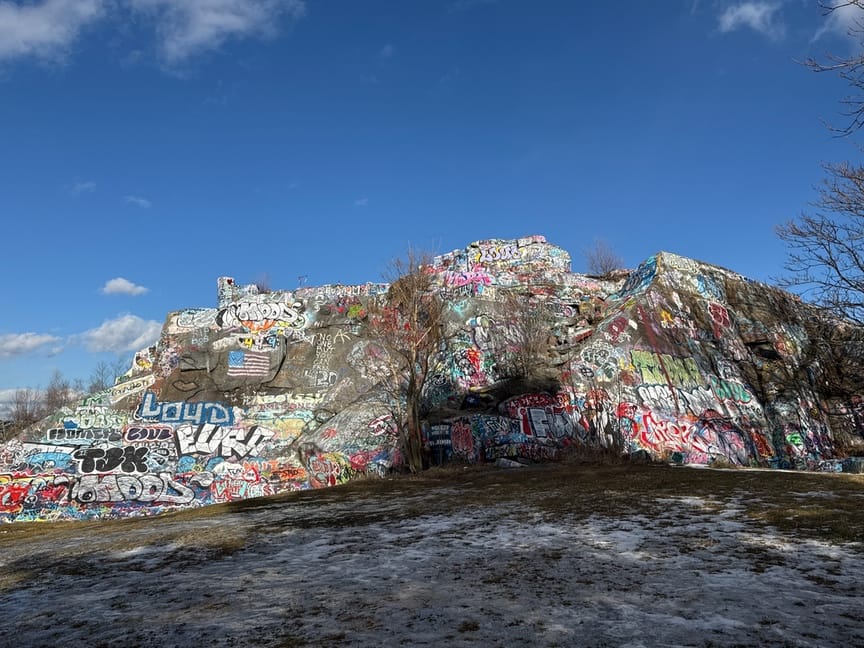
It was a bright, sunny day when I visited and the colors screamed off of the rock. There's a good amount of your basic I WAS HERE and SUCK IT sorts of tagging, but there are also some really interesting pieces that clearly took a lot of time to plan and execute.
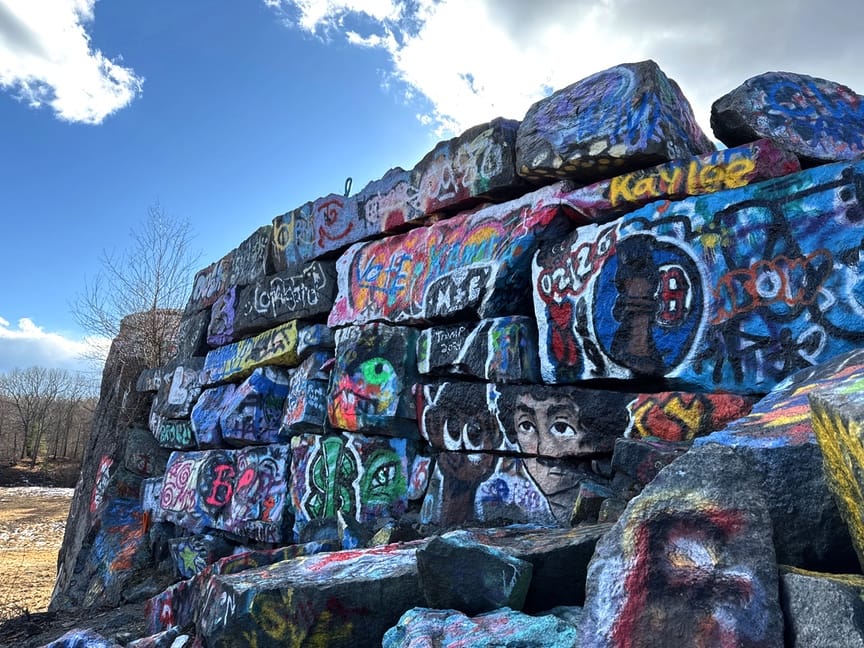
I spent a lot of time here just wandering from outcropping to outcropping, enjoying the open-air exhibition. Even though there's a massive concentration of what I presume are kids here on a regular basis, I found almost no trash anywhere, and not a single spray paint can. There was a pile of smashed pumpkins at the base of one of the hills, and I thought that would've made for a fun afternoon, drinking beer and chucking pumpkins over the side of the cliff.
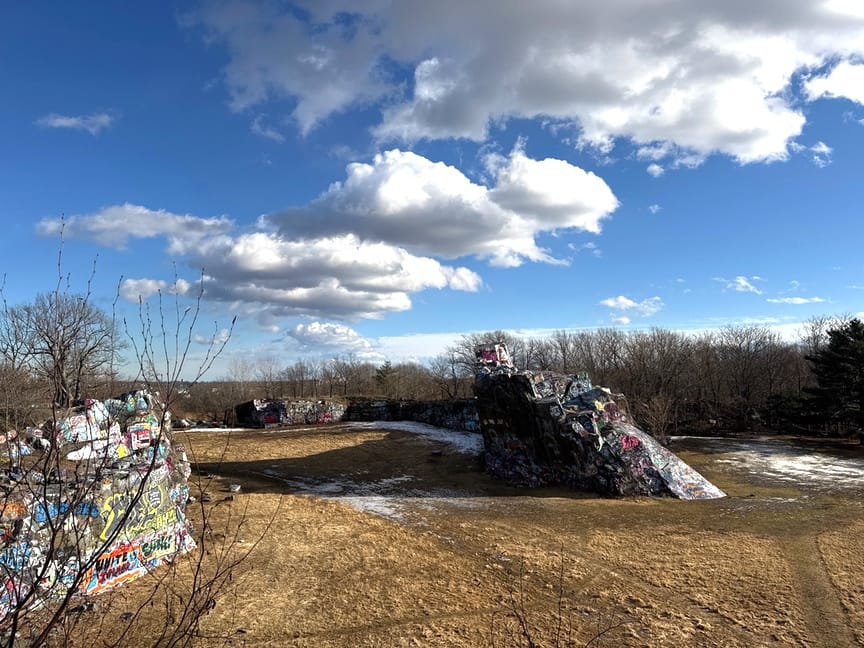
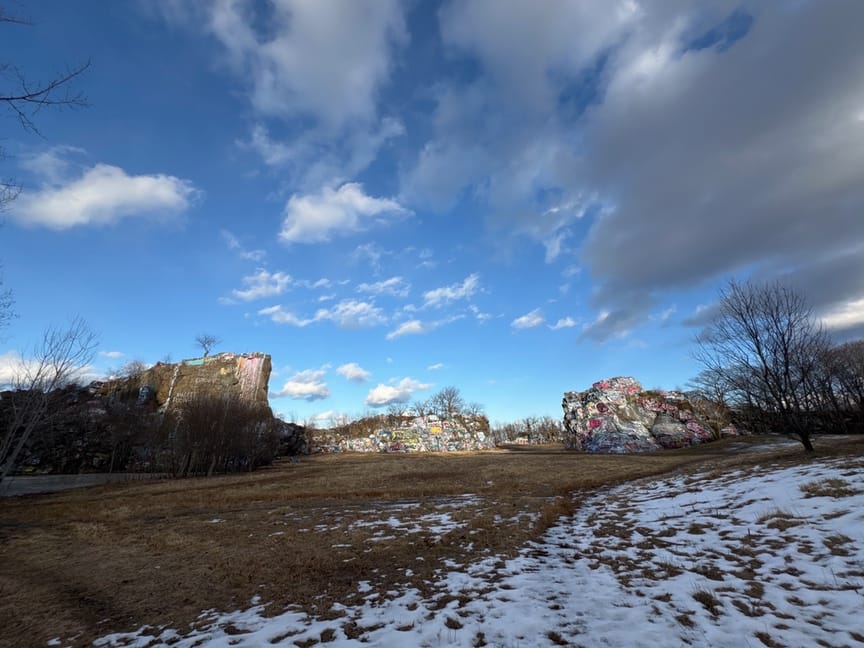
An overview from the top and bottom of the quarry.
The view from a high spot down into the quarry shows you how it was constructed. The pit would have been about as deep as these rocks are high, and filled with water, with the rock faces extending down into what is now soil fill. There's still water around in a few ponds, especially on the north side, and the level ground can be a little swampy after a rain.
Even though the rock faces look nearly vertical, all of the outcroppings have a way to get to the top without climbing, especially on the south side of the park, where a small ridge connects the hills along a path on the back side. I was facing some interesting logistical challenges when I visited – the wind was howling out of the northeast, making the 38ºF sunny day downright cold, and the park is adjacent to I-93, the major route in and out of Boston, and it was LOUD. I wanted a view of the city, but it just wasn't possible to operate from the peaks. I snapped a few photos and then hunkered down on the leeward side of the hill, up around 50 feet.
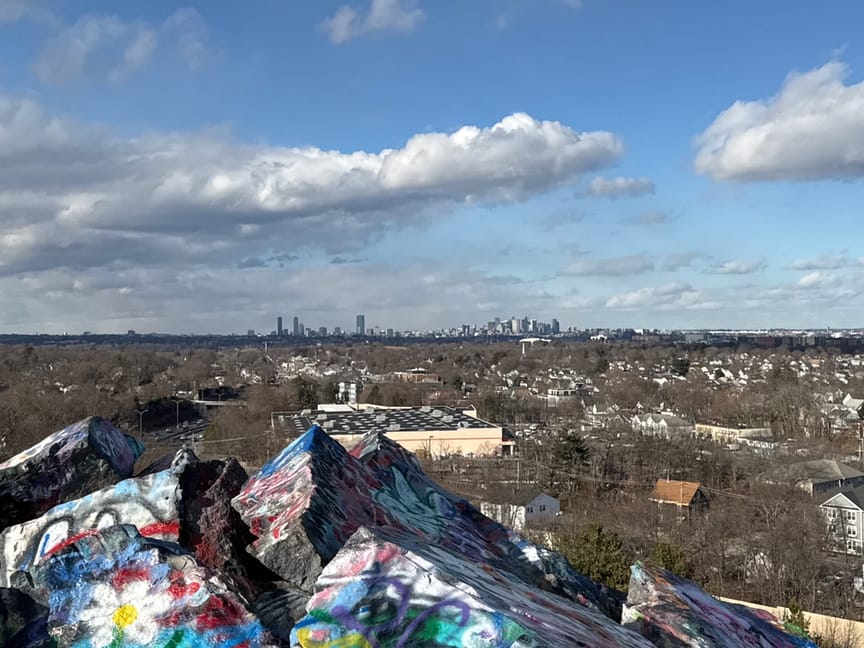
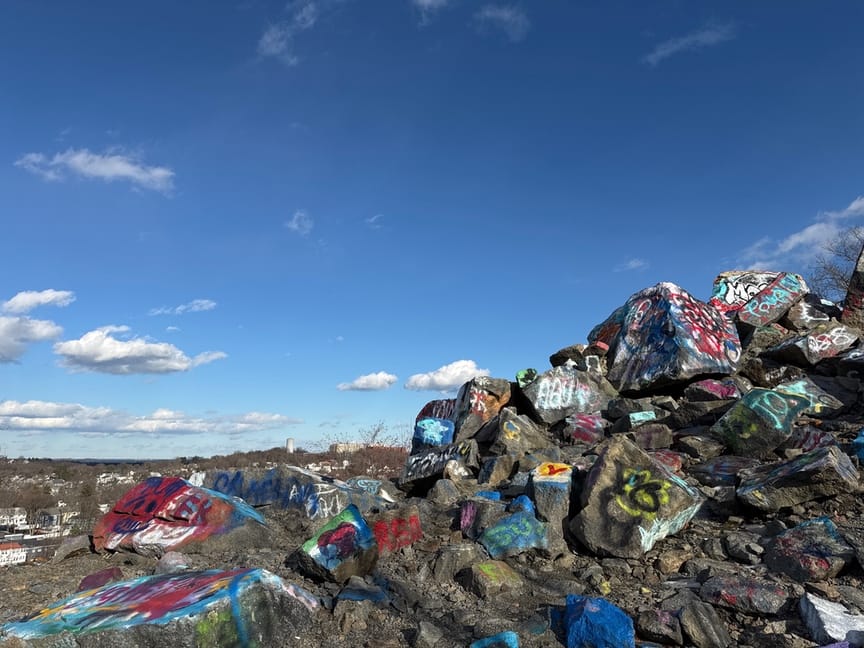
Views from the top of my operating position: Boston (L) and part of Quincy (R).
There aren't that many trees on these outcroppings, but there happened to be a relatively tall one near where I wanted to sit, and I suspended my 17' vertical from near its top. The end of the wire was up about 30 feet, and so the counterpoise ended up being mostly hung in a sort of vertical dipole arrangement. It was a little awkward tossing a line into a tree that sat on a cliff, but somehow I managed to keep both my body and my line on solid ground.
The activation itself went quickly and I pulled in good signal reports from mainly the midwest and south. The difference in power output between the 5W I run on the IC-705 and the 10W on the KX2, which I was using today, is noticeable, especially with a small wire like the vertical. I'd forgotten to bring along a headset and a few times had to crank the gain and hunch down to pull a weak signal out of the muck. Adding a pair to the bag was the first thing I did when I got home.
A quick note about parking. The primary route to the quarry is I-93. When you come off the highway and make the turn from the ramp, there are two parking areas in the first quarter mile or so. The farther one is the 'official' parking lot, but you'll want instead to pull into the first lot that you see on your right. It's smaller but is immediately adjacent the quarry itself. In the summer there will be a larger overflow parking area next to this one.
If you plan to visit and activate the quarry, put a can of spray paint in your bag. When else are you going to have the opportunity to paint your own name and artwork onto a POTA park? I'll leave you with a small gallery of images from around the quarry.
